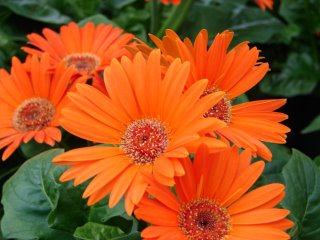NATURAL LAWN CARE ALTERNATIVESMore and more communities are asking the question. Are pesticides and herbicides safe for residents and the environment?
On Jan. 1, 2005 the Environmental Protection Agency, or EPA, banned the pesticide diazinon for residential use. Manufacturers had called the chemical safe for many years, but accumulating evidence suggested otherwise.
New research is calling into question similar claims for herbicides. Landscape maintenance people have long been attracted to the chemicals, which zap weeds that invade space between bricks and other material. The most common herbicide used by landscape workers is glyphosate, usually sold under the trade name Roundup. Glyphosate is the subject of new interest among researchers. Called “practically nontoxic” by manufacturer Monsanto, recent studies suggest links between the substance and reproductive problems in humans and animals.
Published this August, two new studies show that relatively low levels of glyphosate kill most tadpoles in affected ponds. The research was conducted by Prof. Rick Relyea of the University of Pittsburgh.
“The most striking result from the experiments was that a chemical designed to kill plants killed 98 percent of all tadpoles within three weeks,” Relyea said.
Landscape workers who choose to use glyphosate-based herbicides should follow all manufacturer instructions carefully.
Interesting, other studies suggest that the herbicide glyphosate itself isn’t to blame. An accompanying “surfactant” in Roundup, which helps the herbicide penetrate leaves, seems to be responsible.
Previous studies, one from Canada and one from France, suggest that an increased risk of human reproductive harm exists in communities where glyphosate compounds are heavily used. Other research is not tied directly to glyphosate or Roundup, but suggests that higher cancer rates accompany landscapes where chemical use is high. At least one study found elevated cancer rates among golf course superintendents (who oversee hundreds of pounds of chemical applications each year). Another study (Purdue University, 2004) found higher rates of bladder cancer in dogs whose owners used the most lawn chemicals.
To be sure, glyphosate and other products on the market have been extensively tested and are unlikely to cause immediate harm to users. But the new research suggests there are consequences to using the substances.
In response, many communities are putting together local ordinances that ban or restrict residential chemical use. Some landscape maintenance companies are even starting to market their services as “organic” or “chemical-free.”
Wisconsin’s Jim Sommerfeld, for example, runs a business called Happy Lawn that avoids pesticides and herbicides and uses corn gluten meal in the place of industrial fertilizers.
To go chemical-free, customers have to accept a few dandilions, Sommerfeld told Madison, Wis.’s Capitol Times.
“A lot of people still have the mind-set that they want a perfectly-green, weed-free, golf-course type of lawn,” he said.
At least one organization is spreading word of the benefits associated with chemical-free landscapes. The group is called
beyondpesticides.org.
The BP web site offers a number of practical tips to keeping a garden healthy without chemicals. Regarding lawns, the group says that a lawn kept healthy will tend to keep pests and weeds to a minimum. In short, keep your lawn aerated and pH-balanced, and it will have fewer weeds.
Greenscape Gardens is now retailing a new line of natural organic lawn care products. If you're concerned about the environment, these new products are well worth looking at.








